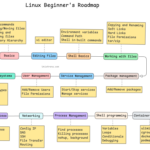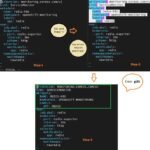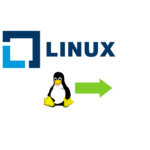Linux is a free, open-source operating system widely used in servers, cloud environments, embedded systems, and even desktops. It is known for its stability, flexibility, and security, making it a cornerstone in fields like DevOps, cybersecurity, and software development. If you’re new to Linux, this roadmap will guide you through the essentials you need to […]
Linux - How to ?
How to Create Animated GIFs from Linux Terminal Output: A Step-by-Step Guide
Capturing and sharing terminal sessions has never been easier with Asciinema, a powerful tool for recording command-line interactions. In this blog post, we’ll explore how to harness the capabilities of Asciinema to create captivating GIF animations from your terminal sessions. Whether you’re documenting a tutorial, showcasing your command-line prowess, or simply adding visual appeal to […]
How to create banner messages in Linux quickly?
The banner message refers to the text that is displayed when a user logs into the system. This message is typically displayed before the login prompt and can be used to convey important information or notices to users. MOTD (Message of the Day): The MOTD is a dynamic message that is displayed to users after […]
Quick vi editor hacks for DevOps Engineers
DevOps engineers have to work on a wide range of toolsets to meet the organization’s requirements. In the DevOps role, one tool is going to stay forever to make an engineer’s life simple and more powerful. As the article heading says, it is “vi” editor. The “vi” editor is created by Bill Joy in 1976 […]
How to extend the root filesystem in RHEL 8 / CentOS 8?
How to extend / (root) filesystem without reinstalling the operating system ?. Is it possible to extend the root filesystem without destroying data? Is it possible to extend on the fly? The answer is yes if you are using LVM. This article will walk you through extending the root filesystem on Redhat Linux 8 (RHEL […]
How to fix Meltdown & Spectre Vulnerabilities on Redhat Linux?
Redhat is closely working with Intel and AMD to mitigate the risk of micro-architectural (hardware) implementation issues which are named as Meltdown and Spectre. These vulnerabilities are mostly affecting many modern microprocessors which include Intel, AMD, IBM power and ARM processors. These issues can be overcome by updating Linux kernel, virtualization-related components, and/or in combination with […]
LINUX – SCSI Device Management – Identifying Devices
This article is going to share very least used SCSI commands on Linux operating systems. These commands will be very useful to identifying SCSI devices and tuneable parameters. There are few utilities which can be used to get the detailed information about the scsi devices. lsscsi is most command tool which scans sysfs pseudo file […]
How to Take Remote GUI Session of Linux Server ?
Tiger VNC is a high-performance client/server application that allows end users to take remote GUI session (Remote Desktop) of Linux Servers.So that graphical application can be launched remotely using VNC session.It also provides extensions for advanced authentication methods and TLS encryption.Normally tiger VNC is coming along with Redhat Linux distribution DVD and also its available […]
How to Configure Software RAID on Linux ?
Software RAID is one of the greatest feature in Linux to protect the data from disk failure.We have LVM also in Linux to configure mirrored volumes but Software RAID recovery is much easier in disk failures compare to Linux LVM. I have seen some of the environments are configured with Software RAID and LVM (Volume groups are built using RAID devices).Using […]
How to configure bonding/teaming on Redhat Linux 6 ?
All the system admin would like to avoid server outage by having redundancy for root filesystem using mirroring, Multiple FC links to SAN with help of multi-pathing and many more.So here the question is how do you provide redundancy in network level ? Having a multiple network card will not give any redundancy.In redhat Linux you need to configure bonding […]






